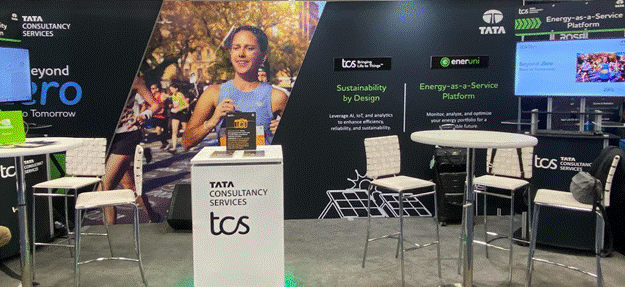Rapid technological changes, from AI to electrification. Major market shifts. The challenge of balancing progress with resilience. Right now, utility leaders face a myriad of priorities: rethinking processes, improving customer experiences, and confronting the uncertainty of the energy transition—while managing all of the above challenges.
So how are they rising to the occasion? We spoke with Sabyasachi Chandra, Vice President and Head of the Utilities Business Unit at Tata Consultancy Services (TCS) Americas, at DistribuTECH 2025 to learn more.
Technological Disruption Meets Market Reform
Sabyasachi framed the current industry shifts into two categories: 1) technological disruption and 2) market reform.
The former spans advancements like generative AI, quantum computing, and cloud-based utilities platforms, all of which offer utilities new tools to enhance efficiency and innovation. On the other hand, market reform addresses trends like energy transition, corporate activity like mergers and acquisitions, and resilience-building in response to external incidents like wildfires and hurricanes.
“When you break down the trends defining the sector, you see two paths—the technological path is about leveraging new tools, like AI, to optimize operations, while the market path revolves around reforms that build resilience and foster competition,” says Sabyasachi.
Breaking down tech disruption
According to Sabyasachi Chandra, it’s hard to look past AI as the dominant theme in utilities’ perception of technology today. In particular, AI implementation framework categorizes capabilities into three progressive levels: assist, augment, and transform.
- At the “assist” stage, generative AI acts as a tool to support human effort, helping with tasks like scanning thousands of regulatory documents to achieve a high level of accuracy in data extraction.
- Moving to “augment,” AI begins to replace specific repetitive activities, such as reducing call center dependence by enabling AI to handle customer interactions with efficiency.
- Finally, at the “transform” level, AI completely revolutionizes the workforce by taking over entire functions, such as automating asset inspections through generative AI-powered image analysis.
Here’s an example: Generative AI (Gen AI) has been successfully deployed to streamline regulatory filings, reporting an achievement of up to 95% accuracy in scanning operational documents, accelerate the process and minimize the need for human workers to perform such tedious tasks. Gen AI is also transforming call center functions and asset inspections, enabling utilities to reduce costs while maintaining high standards of service. “This assist-augment-transform framework is changing how utilities engage with their workforce,” Sabyasachi shared.
As utilities navigate these new tech boundaries, he noted that traditional definitions are starting to fade. “Utilities want to be tech companies, and tech companies want to be utilities. Further, utilities are putting large amounts of investment in cybersecurity. That’s reshaping the entire ecosystem,” says Sabyasachi.
This evolution invites utility executives to embrace partnerships that extend beyond their industry. Tata Power and TCS have collaborated to launch EnerUni, a unique energy-as-a-service platform. This launch underlines the importance of ecosystems that integrate renewables, energy management, and customer-centric solutions.
Looking Ahead: Lessons from Across the Globe and Technology as a Business Driver
As a global player, TCS draws lessons from diverse markets. Sabyasachi Chandra contrasted the customer-centric approaches of European utilities—where competition demands heightened customer experience—with the resilience-driven strategies seen in the US. “In the United States, utilities excel in preparing for major incidents like hurricanes and wildfires, while some of the global peers in the UK, Europe, and Australian markets are spending more in customer experience and new products and services due to competitive nature of the market,” Chandra said.
But instead of predicting the future, Chandra emphasized that technology itself drives innovation in unforeseen ways. He likened the evolution of AI and quantum computing to the smartphone moment—an era where technology created new business models previously unimaginable. “Technology isn’t just responding to business needs anymore; it’s guiding them,” he said.
As utilities evolve beyond traditional definitions, Chandra envisions a bold future: “The utility sector is being defined by hyper-personalization, exponential value delivery, risk-taking, and ecosystem collaborations. This isn’t just a business; it’s a transformation.”
All week, Energy Central is publishing our series of conversations from DistribuTECH 2025. You can see them all as they go live at this landing page.
Other published interviews:










